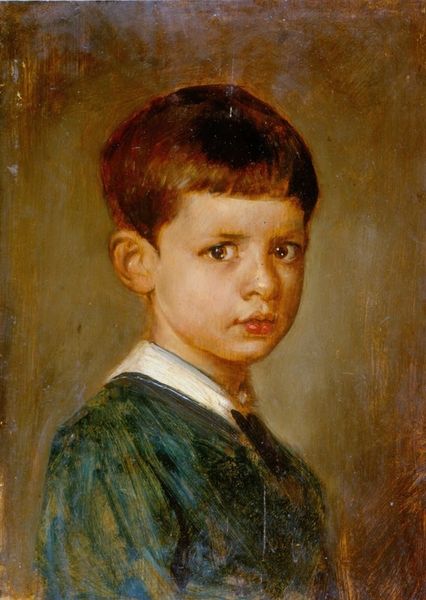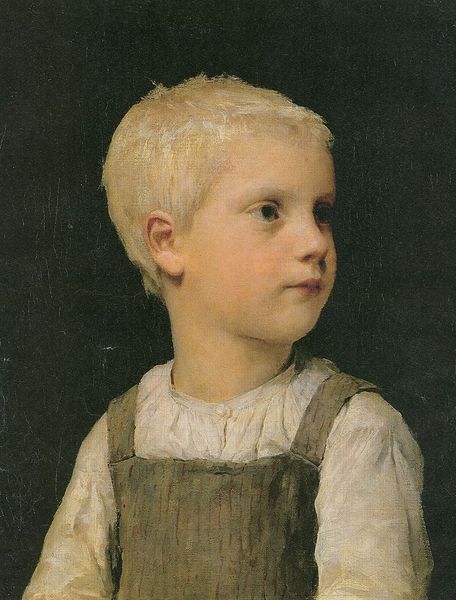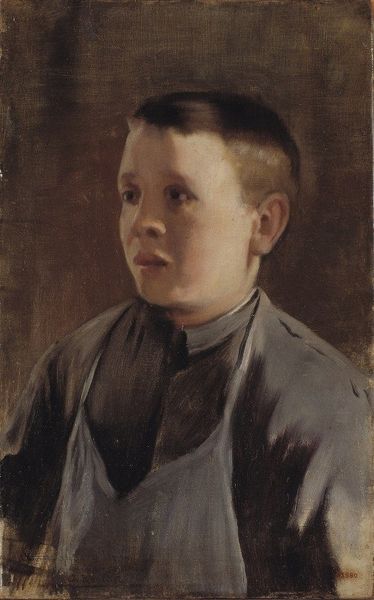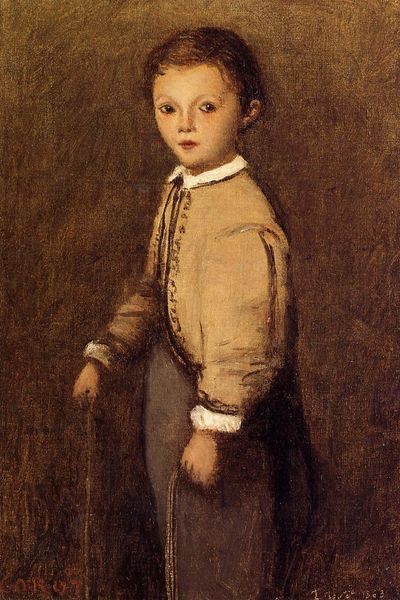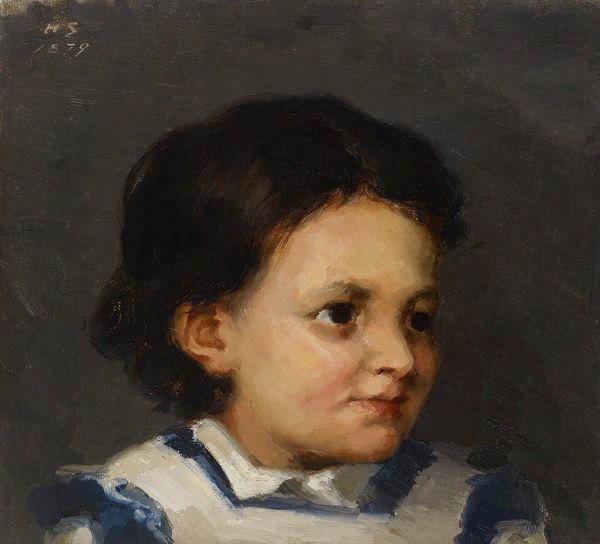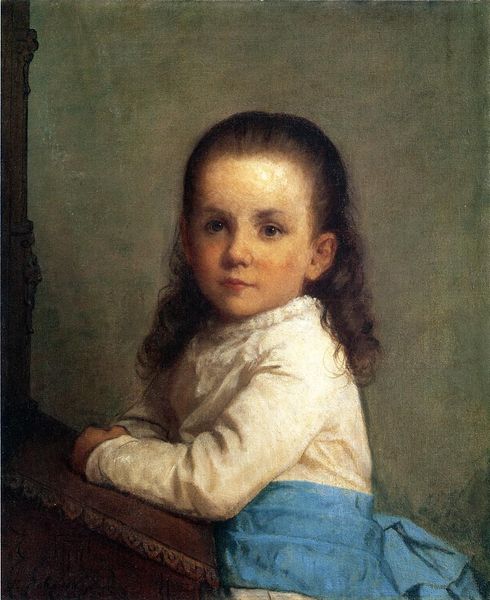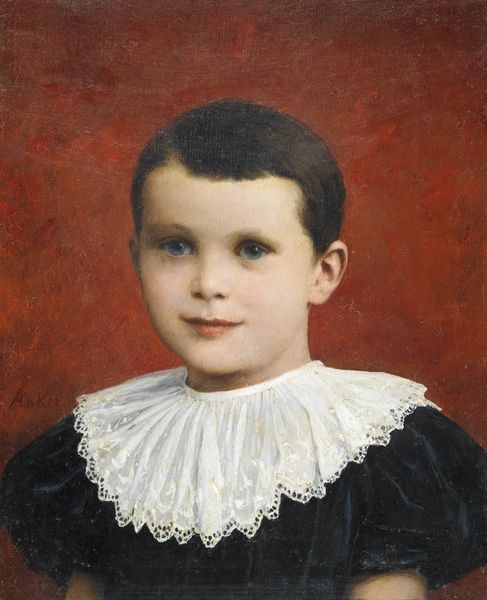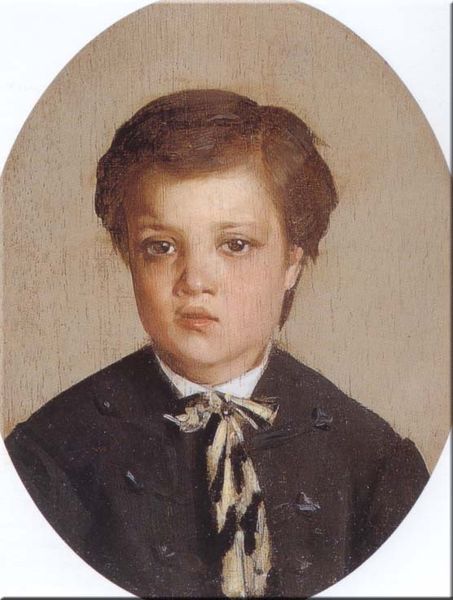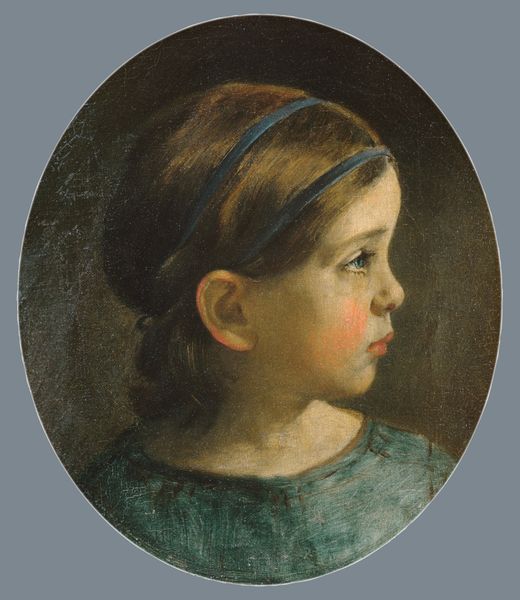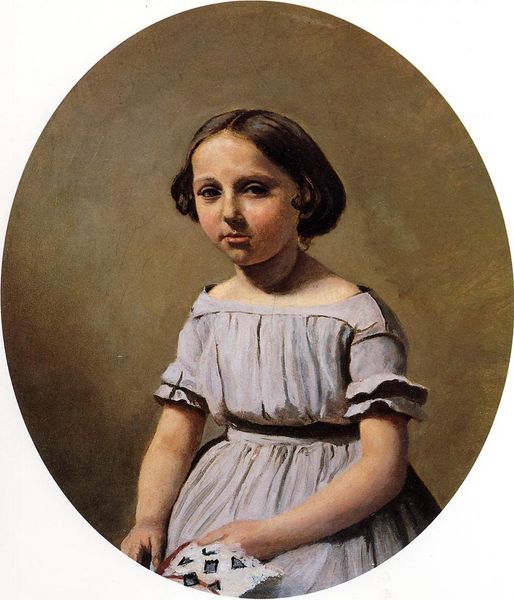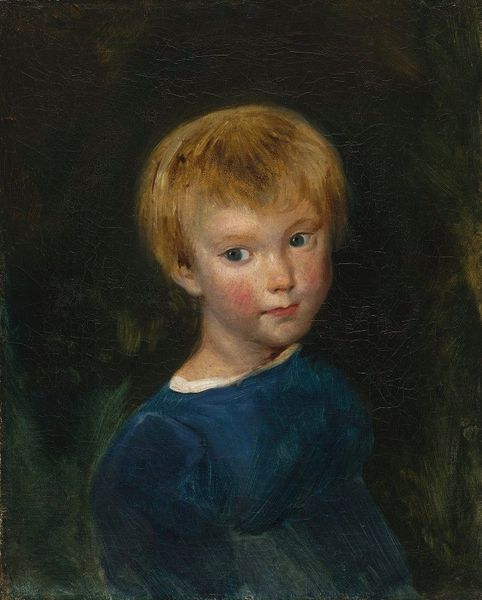
painting, oil-paint
#
portrait
#
painting
#
oil-paint
#
romanticism
#
genre-painting
#
academic-art
#
realism
Dimensions: 26.5 x 22 cm
Copyright: Public domain
Curator: Welcome. Before us is "The Son of M. Edouard Delalain", an oil painting created around 1850 by Camille Corot. It's a compelling portrait. Editor: It's arresting, isn't it? The child’s gaze is so direct, almost unnerving. And the muted palette gives it such a somber feeling. It makes you wonder what's going on behind those eyes. Curator: Corot's career shows an interesting negotiation of genre. Though mostly celebrated for his landscapes, portraits like these provide insight into the conventions of the time, with Corot taking inspiration from Romanticism and Realism to appeal to broader audiences. Portraits were essential commissions at the time. Editor: Absolutely. But looking at this today, it begs the question of representation, particularly concerning children. The sitter, poised as a smaller figure of authority in a middle-class family, hints at expectations placed on boys even then. How much agency did this child truly have in posing for this portrait? Curator: A relevant point, and one to consider when viewing such works. It is likely that Delalain’s status afforded him the opportunity to secure the service of such an artist as Corot to commemorate his son, reinforcing his own position in society. These works also reinforced traditional family and class values. Editor: It's those silent social structures and expectations, silently imposing themselves through art. And looking at how the artist uses light and shadow to define the boy's face, creating a sense of weight beyond his years is almost eerie. One sees this portrait through multiple lenses—artistic skill but also social imposition. Curator: Corot has masterfully used tone to emphasize a mood of melancholy. However, this artistic ability served a stratified social environment. A powerful representation which reflects those values back at us as we grapple with our own. Editor: Art like this pushes us to engage in critical analysis. To me, "The Son of M. Edouard Delalain," provides the occasion to reflect on these silent, formative impositions in art and beyond, encouraging us to challenge and reimagine what’s presented as normality. Curator: A nuanced analysis I concur with. I walk away also intrigued by what this reveals about the artist's ambitions.
Comments
No comments
Be the first to comment and join the conversation on the ultimate creative platform.
